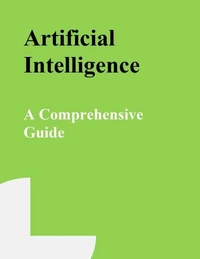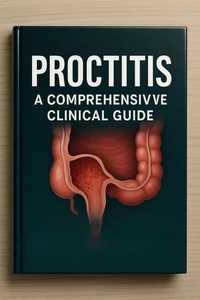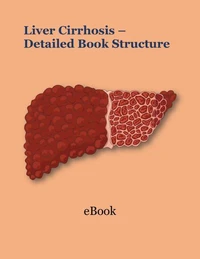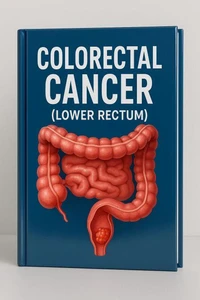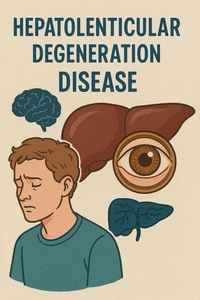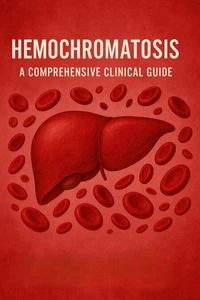Septic arthritis
Par :Formats :
Disponible dans votre compte client Decitre ou Furet du Nord dès validation de votre commande. Le format ePub est :
- Compatible avec une lecture sur My Vivlio (smartphone, tablette, ordinateur)
- Compatible avec une lecture sur liseuses Vivlio
- Pour les liseuses autres que Vivlio, vous devez utiliser le logiciel Adobe Digital Edition. Non compatible avec la lecture sur les liseuses Kindle, Remarkable et Sony
 , qui est-ce ?
, qui est-ce ?Notre partenaire de plateforme de lecture numérique où vous retrouverez l'ensemble de vos ebooks gratuitement
Pour en savoir plus sur nos ebooks, consultez notre aide en ligne ici
- FormatePub
- ISBN8231045440
- EAN9798231045440
- Date de parution19/06/2025
- Protection num.pas de protection
- Infos supplémentairesepub
- ÉditeurWalzone Press
Résumé
Septic arthritis, a potentially devastating joint infection, remains one of the most urgent medical conditions requiring early diagnosis and aggressive treatment. This comprehensive volume, Septic Arthritis: Pathogenesis, Diagnosis, and Management, explores the full scope of this serious orthopedic and infectious disease with clarity, depth, and clinical relevance. Designed for medical professionals, researchers, and students alike, this authoritative resource integrates current scientific understanding with evidence-based clinical practices, offering a definitive guide to tackling septic arthritis across diverse patient populations.
The book opens with a thorough introduction to the pathophysiology of septic arthritis, detailing how microorganisms-most commonly Staphylococcus aureus-invade the synovial space, incite inflammation, and lead to rapid joint destruction. It explores both hematogenous and direct inoculation routes of infection, addressing key risk factors such as immunosuppression, preexisting joint disease, recent surgery, trauma, intravenous drug use, and prosthetic joint implantation.
Chapters on clinical presentation and diagnostic challenges emphasize the often-subtle manifestations of the disease, particularly in neonates, elderly patients, and immunocompromised individuals. The book stresses the critical importance of a high index of suspicion and rapid diagnostic workup, including synovial fluid aspiration, Gram staining, culture techniques, and advanced imaging modalities such as MRI and ultrasound.
Laboratory markers-CRP, ESR, leukocyte count-are analyzed in context, and the differential diagnosis of monoarticular arthritis is exhaustively reviewed. A dedicated section on microbiology explores the spectrum of causative organisms, from gram-positive cocci and gram-negative bacilli to fastidious pathogens and fungal or mycobacterial agents. The increasing prevalence of antibiotic-resistant strains is discussed in light of global antimicrobial stewardship efforts.
Management strategies form the core of this text, combining surgical and medical perspectives. Detailed discussions cover joint drainage techniques-arthrocentesis, arthroscopy, and open surgical drainage-alongside targeted antibiotic regimens based on pathogen susceptibility. Specific guidance is offered for pediatric septic arthritis, prosthetic joint infections, polyarticular involvement, and rare presentations such as gonococcal arthritis and tuberculosis-related septic arthritis.
The book also addresses complications, including osteomyelitis, joint ankylosis, chronic pain, and disability. Post-infection rehabilitation, long-term follow-up, and strategies for preserving joint function are examined with input from orthopedic surgeons, rheumatologists, and physiotherapists. In the final chapters, readers will find insights into current research trends, including molecular diagnostics, biomarkers, and innovative therapies such as bacteriophage therapy and intra-articular antimicrobial delivery systems.
Real-world case studies and clinical algorithms aid practical decision-making and provide context for managing complex or atypical cases. With its multidisciplinary approach, richly illustrated chapters, and evidence-based recommendations, Septic Arthritis: Pathogenesis, Diagnosis, and Management is an indispensable reference for clinicians in infectious diseases, orthopedics, rheumatology, emergency medicine, and pediatrics.
It is also a valuable resource for researchers working to unravel the pathogenesis of joint infections and develop novel interventions. Whether used in clinical practice or academic study, this book equips readers with the tools to confront septic arthritis with confidence, precision, and compassion.
The book opens with a thorough introduction to the pathophysiology of septic arthritis, detailing how microorganisms-most commonly Staphylococcus aureus-invade the synovial space, incite inflammation, and lead to rapid joint destruction. It explores both hematogenous and direct inoculation routes of infection, addressing key risk factors such as immunosuppression, preexisting joint disease, recent surgery, trauma, intravenous drug use, and prosthetic joint implantation.
Chapters on clinical presentation and diagnostic challenges emphasize the often-subtle manifestations of the disease, particularly in neonates, elderly patients, and immunocompromised individuals. The book stresses the critical importance of a high index of suspicion and rapid diagnostic workup, including synovial fluid aspiration, Gram staining, culture techniques, and advanced imaging modalities such as MRI and ultrasound.
Laboratory markers-CRP, ESR, leukocyte count-are analyzed in context, and the differential diagnosis of monoarticular arthritis is exhaustively reviewed. A dedicated section on microbiology explores the spectrum of causative organisms, from gram-positive cocci and gram-negative bacilli to fastidious pathogens and fungal or mycobacterial agents. The increasing prevalence of antibiotic-resistant strains is discussed in light of global antimicrobial stewardship efforts.
Management strategies form the core of this text, combining surgical and medical perspectives. Detailed discussions cover joint drainage techniques-arthrocentesis, arthroscopy, and open surgical drainage-alongside targeted antibiotic regimens based on pathogen susceptibility. Specific guidance is offered for pediatric septic arthritis, prosthetic joint infections, polyarticular involvement, and rare presentations such as gonococcal arthritis and tuberculosis-related septic arthritis.
The book also addresses complications, including osteomyelitis, joint ankylosis, chronic pain, and disability. Post-infection rehabilitation, long-term follow-up, and strategies for preserving joint function are examined with input from orthopedic surgeons, rheumatologists, and physiotherapists. In the final chapters, readers will find insights into current research trends, including molecular diagnostics, biomarkers, and innovative therapies such as bacteriophage therapy and intra-articular antimicrobial delivery systems.
Real-world case studies and clinical algorithms aid practical decision-making and provide context for managing complex or atypical cases. With its multidisciplinary approach, richly illustrated chapters, and evidence-based recommendations, Septic Arthritis: Pathogenesis, Diagnosis, and Management is an indispensable reference for clinicians in infectious diseases, orthopedics, rheumatology, emergency medicine, and pediatrics.
It is also a valuable resource for researchers working to unravel the pathogenesis of joint infections and develop novel interventions. Whether used in clinical practice or academic study, this book equips readers with the tools to confront septic arthritis with confidence, precision, and compassion.
Septic arthritis, a potentially devastating joint infection, remains one of the most urgent medical conditions requiring early diagnosis and aggressive treatment. This comprehensive volume, Septic Arthritis: Pathogenesis, Diagnosis, and Management, explores the full scope of this serious orthopedic and infectious disease with clarity, depth, and clinical relevance. Designed for medical professionals, researchers, and students alike, this authoritative resource integrates current scientific understanding with evidence-based clinical practices, offering a definitive guide to tackling septic arthritis across diverse patient populations.
The book opens with a thorough introduction to the pathophysiology of septic arthritis, detailing how microorganisms-most commonly Staphylococcus aureus-invade the synovial space, incite inflammation, and lead to rapid joint destruction. It explores both hematogenous and direct inoculation routes of infection, addressing key risk factors such as immunosuppression, preexisting joint disease, recent surgery, trauma, intravenous drug use, and prosthetic joint implantation.
Chapters on clinical presentation and diagnostic challenges emphasize the often-subtle manifestations of the disease, particularly in neonates, elderly patients, and immunocompromised individuals. The book stresses the critical importance of a high index of suspicion and rapid diagnostic workup, including synovial fluid aspiration, Gram staining, culture techniques, and advanced imaging modalities such as MRI and ultrasound.
Laboratory markers-CRP, ESR, leukocyte count-are analyzed in context, and the differential diagnosis of monoarticular arthritis is exhaustively reviewed. A dedicated section on microbiology explores the spectrum of causative organisms, from gram-positive cocci and gram-negative bacilli to fastidious pathogens and fungal or mycobacterial agents. The increasing prevalence of antibiotic-resistant strains is discussed in light of global antimicrobial stewardship efforts.
Management strategies form the core of this text, combining surgical and medical perspectives. Detailed discussions cover joint drainage techniques-arthrocentesis, arthroscopy, and open surgical drainage-alongside targeted antibiotic regimens based on pathogen susceptibility. Specific guidance is offered for pediatric septic arthritis, prosthetic joint infections, polyarticular involvement, and rare presentations such as gonococcal arthritis and tuberculosis-related septic arthritis.
The book also addresses complications, including osteomyelitis, joint ankylosis, chronic pain, and disability. Post-infection rehabilitation, long-term follow-up, and strategies for preserving joint function are examined with input from orthopedic surgeons, rheumatologists, and physiotherapists. In the final chapters, readers will find insights into current research trends, including molecular diagnostics, biomarkers, and innovative therapies such as bacteriophage therapy and intra-articular antimicrobial delivery systems.
Real-world case studies and clinical algorithms aid practical decision-making and provide context for managing complex or atypical cases. With its multidisciplinary approach, richly illustrated chapters, and evidence-based recommendations, Septic Arthritis: Pathogenesis, Diagnosis, and Management is an indispensable reference for clinicians in infectious diseases, orthopedics, rheumatology, emergency medicine, and pediatrics.
It is also a valuable resource for researchers working to unravel the pathogenesis of joint infections and develop novel interventions. Whether used in clinical practice or academic study, this book equips readers with the tools to confront septic arthritis with confidence, precision, and compassion.
The book opens with a thorough introduction to the pathophysiology of septic arthritis, detailing how microorganisms-most commonly Staphylococcus aureus-invade the synovial space, incite inflammation, and lead to rapid joint destruction. It explores both hematogenous and direct inoculation routes of infection, addressing key risk factors such as immunosuppression, preexisting joint disease, recent surgery, trauma, intravenous drug use, and prosthetic joint implantation.
Chapters on clinical presentation and diagnostic challenges emphasize the often-subtle manifestations of the disease, particularly in neonates, elderly patients, and immunocompromised individuals. The book stresses the critical importance of a high index of suspicion and rapid diagnostic workup, including synovial fluid aspiration, Gram staining, culture techniques, and advanced imaging modalities such as MRI and ultrasound.
Laboratory markers-CRP, ESR, leukocyte count-are analyzed in context, and the differential diagnosis of monoarticular arthritis is exhaustively reviewed. A dedicated section on microbiology explores the spectrum of causative organisms, from gram-positive cocci and gram-negative bacilli to fastidious pathogens and fungal or mycobacterial agents. The increasing prevalence of antibiotic-resistant strains is discussed in light of global antimicrobial stewardship efforts.
Management strategies form the core of this text, combining surgical and medical perspectives. Detailed discussions cover joint drainage techniques-arthrocentesis, arthroscopy, and open surgical drainage-alongside targeted antibiotic regimens based on pathogen susceptibility. Specific guidance is offered for pediatric septic arthritis, prosthetic joint infections, polyarticular involvement, and rare presentations such as gonococcal arthritis and tuberculosis-related septic arthritis.
The book also addresses complications, including osteomyelitis, joint ankylosis, chronic pain, and disability. Post-infection rehabilitation, long-term follow-up, and strategies for preserving joint function are examined with input from orthopedic surgeons, rheumatologists, and physiotherapists. In the final chapters, readers will find insights into current research trends, including molecular diagnostics, biomarkers, and innovative therapies such as bacteriophage therapy and intra-articular antimicrobial delivery systems.
Real-world case studies and clinical algorithms aid practical decision-making and provide context for managing complex or atypical cases. With its multidisciplinary approach, richly illustrated chapters, and evidence-based recommendations, Septic Arthritis: Pathogenesis, Diagnosis, and Management is an indispensable reference for clinicians in infectious diseases, orthopedics, rheumatology, emergency medicine, and pediatrics.
It is also a valuable resource for researchers working to unravel the pathogenesis of joint infections and develop novel interventions. Whether used in clinical practice or academic study, this book equips readers with the tools to confront septic arthritis with confidence, precision, and compassion.



